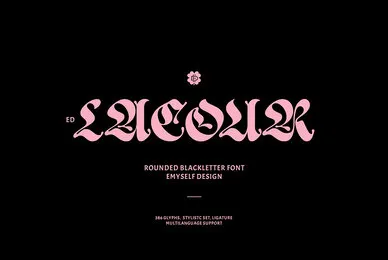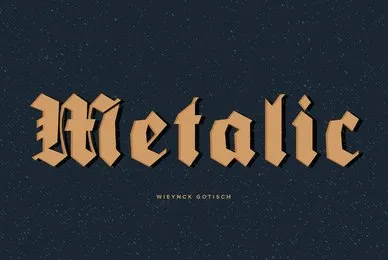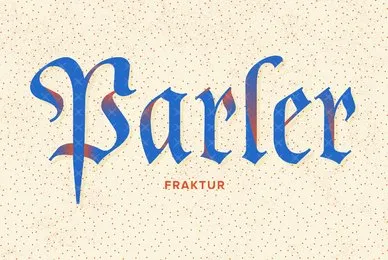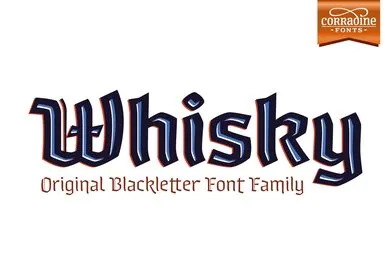Register now for instant access to an exclusive collection of Free Fonts, Graphics, and Photos.
Please check your email to verify your account. RESEND
- All Items
- Fonts
- Graphics
- Photos
- Videos
- Extras


Forgot Password?
New Here?
Register now for instant access to an exclusive collection of Free Fonts, Graphics, and Photos.
Register now for instant access to an exclusive collection of Free Fonts, Graphics, and Photos.
Register now for instant access to an exclusive collection of Free Fonts, Graphics, and Photos.
Enter your registered email below to receive a link to reset your password.
Fraktur Fonts
Fraktur fonts, a quintessential element of the blackletter family, have a rich history that dates back to the early 16th century. Originating in the Holy Roman Empire, Fraktur was named after the Latin word 'fractura', indicating a broken or fractured appearance of its letterforms. It gained prominence as a primary typeface for printed works in Germany and much of Europe, embodying the Gothic tradition in typography.
What Are Fraktur Fonts?
Fraktur fonts are characterized by their intricate detail, sharp edges, and a dense, ornate look. They are part of the larger "blackletter" category, which also includes Textualis, Schwabacher, and Rotunda styles. Fraktur, in particular, is known for its high degree of contrast between thick and thin strokes, as well as its tightly spaced, angular lines.
The Evolution and Resurgence
Although Fraktur's popularity waned with the rise of the Roman typeface in the 18th and 19th centuries, a resurgence of interest in the 20th century saw Fraktur being embraced anew for its aesthetic and historical significance. Today, it is celebrated for its ability to evoke a sense of nostalgia and timelessness, making it a popular choice for projects that aim to capture a vintage or historical essence.
Capturing Retro and Science Fiction Vibes
Designers often turn to Fraktur fonts to capture a retro and science fiction vibe, evoking the mystique and grandeur of medieval manuscripts or the boldness of early 20th-century propaganda. Its association with the past makes it an ideal choice for projects aiming to blend historical elements with futuristic concepts, such as in the genres of steampunk, cyberpunk, or high-tech fantasy.
Fraktur in Contemporary Design
In contemporary graphic design, Fraktur fonts are used in a variety of ways, from music album covers to branding, providing a distinctive and bold aesthetic. Calligraphy artists also explore Fraktur for its dynamic range and expressiveness, while digital designers incorporate it into visual projects that require a touch of classical elegance or a nod to historical roots.
Fraktur fonts stand as a testament to the enduring allure of Gothic typography, offering designers a bridge to the past through their work. Whether employed for their historical resonance or aesthetic appeal, Fraktur fonts continue to inspire and captivate, embodying a rich tradition that spans centuries.
Fraktur Fonts
Fraktur fonts, a quintessential element of the blackletter family, have a rich history that dates back to the early 16th century. Originating in the Holy Roman Empire, Fraktur was named after the Latin word 'fractura', indicating a broken or fractured appearance of its letterforms. It gained prominence as a primary typeface for printed works in Germany and much of Europe, embodying the Gothic tradition in typography.
What Are Fraktur Fonts?
Fraktur fonts are characterized by their intricate detail, sharp edges, and a dense, ornate look. They are part of the larger "blackletter" category, which also includes Textualis, Schwabacher, and Rotunda styles. Fraktur, in particular, is known for its high degree of contrast between thick and thin strokes, as well as its tightly spaced, angular lines.
The Evolution and Resurgence
Although Fraktur's popularity waned with the rise of the Roman typeface in the 18th and 19th centuries, a resurgence of interest in the 20th century saw Fraktur being embraced anew for its aesthetic and historical significance. Today, it is celebrated for its ability to evoke a sense of nostalgia and timelessness, making it a popular choice for projects that aim to capture a vintage or historical essence.
Capturing Retro and Science Fiction Vibes
Designers often turn to Fraktur fonts to capture a retro and science fiction vibe, evoking the mystique and grandeur of medieval manuscripts or the boldness of early 20th-century propaganda. Its association with the past makes it an ideal choice for projects aiming to blend historical elements with futuristic concepts, such as in the genres of steampunk, cyberpunk, or high-tech fantasy.
Fraktur in Contemporary Design
In contemporary graphic design, Fraktur fonts are used in a variety of ways, from music album covers to branding, providing a distinctive and bold aesthetic. Calligraphy artists also explore Fraktur for its dynamic range and expressiveness, while digital designers incorporate it into visual projects that require a touch of classical elegance or a nod to historical roots.
Fraktur fonts stand as a testament to the enduring allure of Gothic typography, offering designers a bridge to the past through their work. Whether employed for their historical resonance or aesthetic appeal, Fraktur fonts continue to inspire and captivate, embodying a rich tradition that spans centuries.
Free Fonts & Graphics Await!
There are currently 220,675 Fonts and 705,659 Stock Art Designs available for download at YouWorkForThem.
The Original Creative Marketplace | Copyright © 2001-2025 YouWorkForThem. All Rights Reserved.
We accept Visa, MasterCard, American Express, Discover, Apple Pay & PayPal.








































